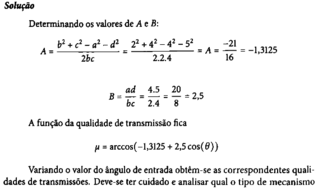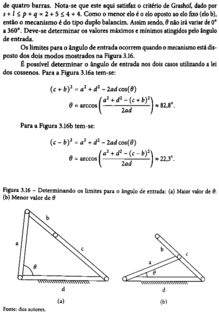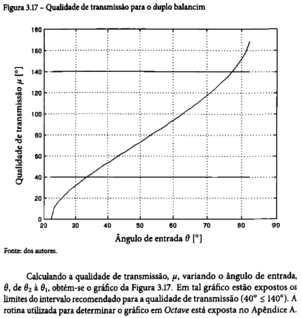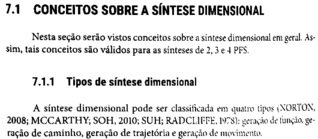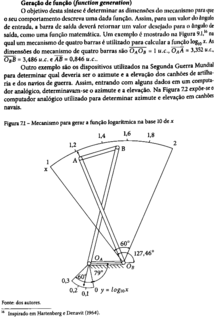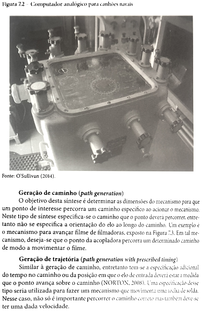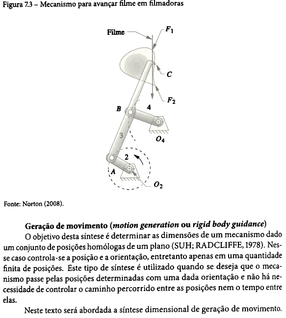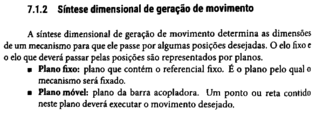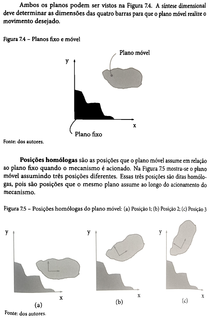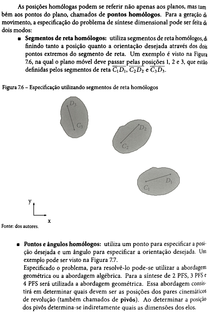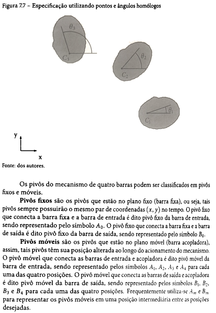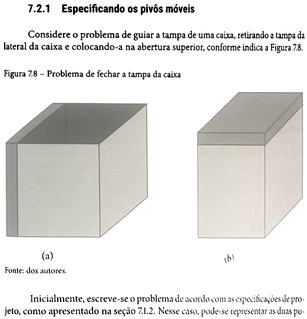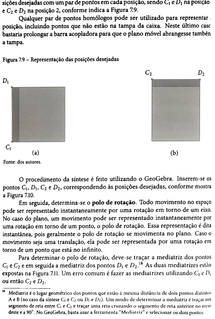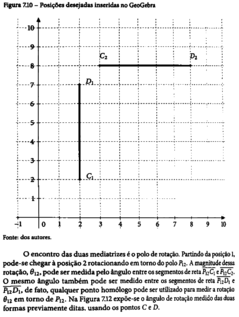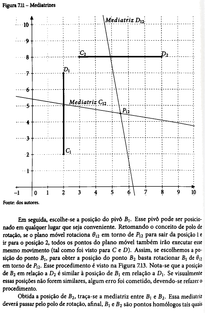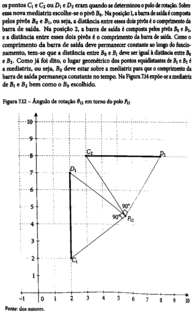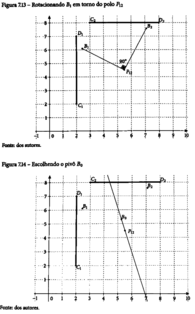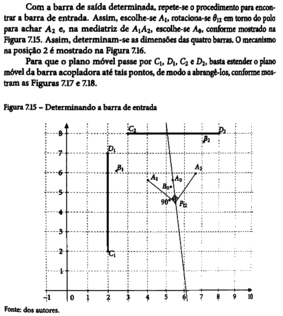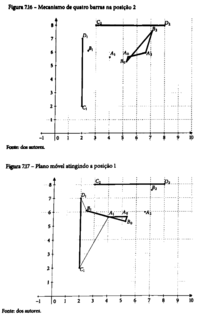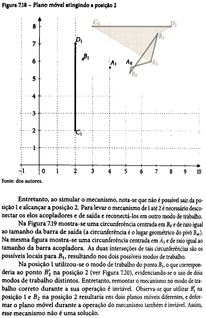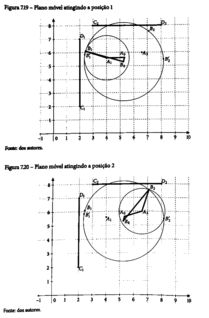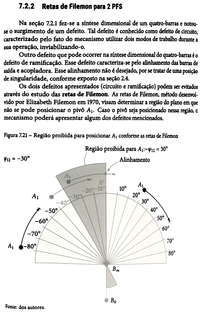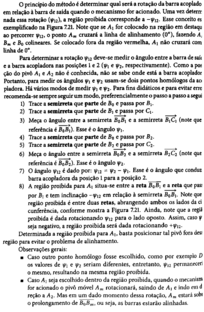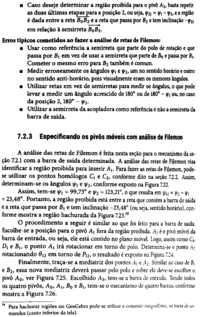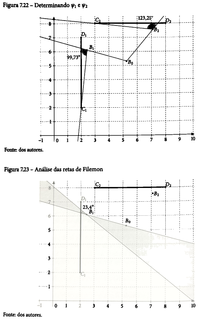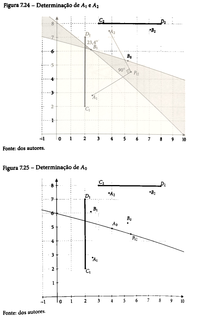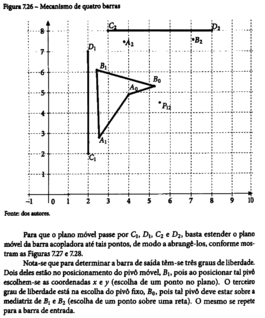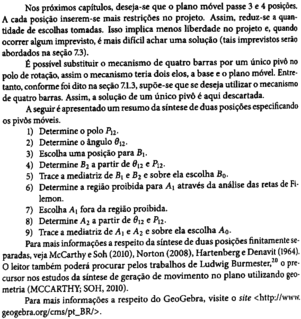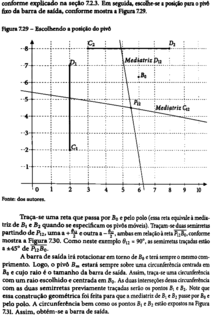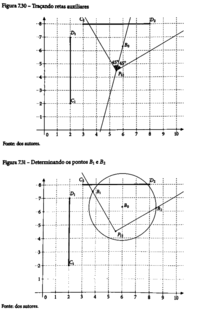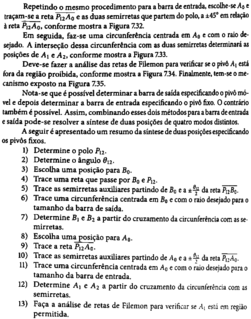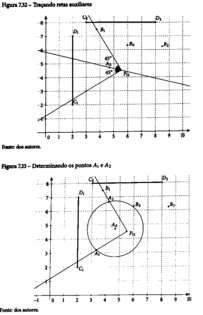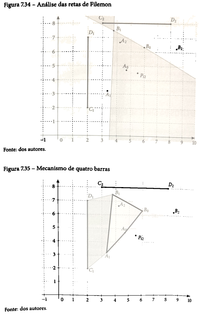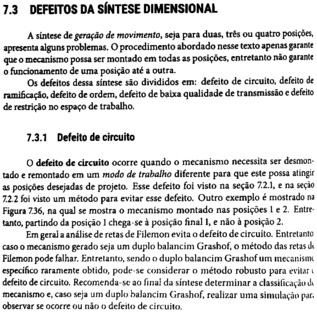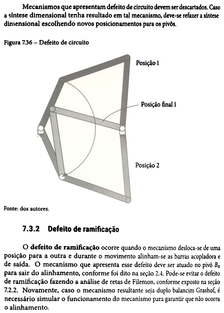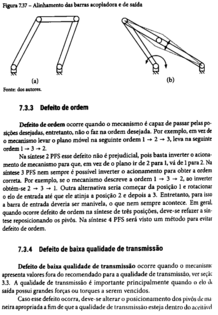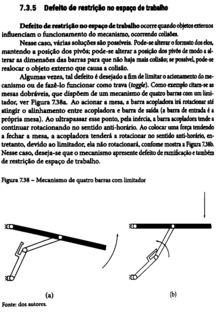Edited, memorised or added to reading queue
on 28-Apr-2021 (Wed)
Do you want BuboFlash to help you learning these things? Click here to log in or create user.
Flashcard 6335278222604
| status | not learned | measured difficulty | 37% [default] | last interval [days] | |||
|---|---|---|---|---|---|---|---|
| repetition number in this series | 0 | memorised on | scheduled repetition | ||||
| scheduled repetition interval | last repetition or drill |
| status | not read | reprioritisations | ||
|---|---|---|---|---|
| last reprioritisation on | suggested re-reading day | |||
| started reading on | finished reading on |
Neri Oxman - Wikipedia
faces with structure at many scales, and composite materials whose hardness, color, and shape vary over an object. The results are often in collaboration with or inspired by nature and biology. <span>Many of Oxman's projects use new platforms and techniques for 3D printing and fabrication. They include co-fabrication systems for building hybrid structures with silkworms (Silk Pavilion),[5] bees (Synthetic Apiary), and ants; Ocean Pavilion, a water-based fabrication platfo
| status | not read | reprioritisations | ||
|---|---|---|---|---|
| last reprioritisation on | suggested re-reading day | |||
| started reading on | finished reading on |
Parent (intermediate) annotation
Open itMany of Oxman's projects use new platforms and techniques for 3D printing and fabrication.
Original toplevel document
Neri Oxman - Wikipediafaces with structure at many scales, and composite materials whose hardness, color, and shape vary over an object. The results are often in collaboration with or inspired by nature and biology. <span>Many of Oxman's projects use new platforms and techniques for 3D printing and fabrication. They include co-fabrication systems for building hybrid structures with silkworms (Silk Pavilion),[5] bees (Synthetic Apiary), and ants; Ocean Pavilion, a water-based fabrication platfo
| status | not read | reprioritisations | ||
|---|---|---|---|---|
| last reprioritisation on | suggested re-reading day | |||
| started reading on | finished reading on |
| status | not read | reprioritisations | ||
|---|---|---|---|---|
| last reprioritisation on | suggested re-reading day | |||
| started reading on | finished reading on |
UpToDate
istent cough can account for up to 40 percent of the practice volume [2]. Cough can be classified based upon the duration of the cough; within each category are likely diagnostic possibilities. <span>Acute cough exists for less than three weeks and is most commonly due to an acute respiratory tract infection. Other considerations include an acute exacerbation of underlying chronic pulmonary disease, pneumonia, and pulmonary embolism. Cough that has been present longer than three weeks is either subacute (three to eight weeks) or chronic (more than eight weeks) [1]. Patients who seek medical attention for chronic cou
| status | not read | reprioritisations | ||
|---|---|---|---|---|
| last reprioritisation on | suggested re-reading day | |||
| started reading on | finished reading on |
UpToDate
ronic pulmonary disease, pneumonia, and pulmonary embolism. Cough that has been present longer than three weeks is either subacute (three to eight weeks) or chronic (more than eight weeks) [1]. <span>Patients who seek medical attention for chronic cough are more likely to be female [3-5]. Among patients with chronic cough, women tend to cough more often and to have heightened cough reflex sensitivity compared to men [4]. The common etiologies, complications, and evaluation of subacute and chronic cough will be reviewed here. The treatment of subacute and chronic cough is described separately. (See "Trea
| status | not read | reprioritisations | ||
|---|---|---|---|---|
| last reprioritisation on | suggested re-reading day | |||
| started reading on | finished reading on |
UpToDate
acute and chronic cough will be reviewed here. The treatment of subacute and chronic cough is described separately. (See "Treatment of subacute and chronic cough in adults".) COUGH REFLEX ARC — <span>Each cough occurs through the stimulation of a complex reflex arc. This is initiated by the irritation of cough receptors that exist not only in the epithelium of the upper and lower respiratory tracts, but also in the pericardium, esophagus, diaphragm, and stomach. Chemical receptors sensitive to acid, cold, heat, capsaicin-like compounds, and other chemical irritants trigger the cough reflex via activation of ion channels of the transient recepto
| status | not read | reprioritisations | ||
|---|---|---|---|---|
| last reprioritisation on | suggested re-reading day | |||
| started reading on | finished reading on |
UpToDate
gh [1,12-14]. The cough center generates an efferent signal that travels down the vagus, phrenic, and spinal motor nerves to expiratory musculature to produce the cough (figure 1). ETIOLOGIES — <span>The most common etiologies of chronic cough are upper airway cough syndrome (due to postnasal drip), asthma, and gastroesophageal reflux [1-3,15-20]. However, a number of other important etiologies must also be considered in patients presenting with persistent cough. As an example, a post-infectious etiology is a particularly common cause of subacute cough, with the cough often lingering long after the other acute symptoms of the infection have diss
| status | not read | reprioritisations | ||
|---|---|---|---|---|
| last reprioritisation on | suggested re-reading day | |||
| started reading on | finished reading on |
UpToDate
As an example, a post-infectious etiology is a particularly common cause of subacute cough, with the cough often lingering long after the other acute symptoms of the infection have dissipated. <span>One study showed that in nearly half of patients, subacute cough was post infectious and resolved without specific therapy [21]. Cough may also be a complication of drug therapy, particularly with angiotensin converting enzyme (ACE) inhibitors. Other less common causes of chronic cough include a number of disorde
| status | not read | reprioritisations | ||
|---|---|---|---|---|
| last reprioritisation on | suggested re-reading day | |||
| started reading on | finished reading on |
UpToDate
ubacute cough was post infectious and resolved without specific therapy [21]. Cough may also be a complication of drug therapy, particularly with angiotensin converting enzyme (ACE) inhibitors. <span>Other less common causes of chronic cough include a number of disorders affecting the airways (nonasthmatic eosinophilic bronchitis, chronic bronchitis, bronchiectasis, neoplasm, foreign body) or the pulmonary parenchyma (interstitial lung disease, lung abscess) (table 1). A cause is identified in 75 to 90 percent of patients with chronic cough [2,15,17]. However, some patients may experience chronic cough of unclear etiology for years, despite extensive evaluation. The etiology of so-called "chronic idiopathic cough" is unknown; exaggerated cough reflex sensitivity has been suggested [5,22]. Upper airway cough syndrome — Several studies suggest that upper airway cough syndrome related to postnasal drip is a common cause of subacute and chronic cough [2,3,17,21]. Underlying
| status | not read | reprioritisations | ||
|---|---|---|---|---|
| last reprioritisation on | suggested re-reading day | |||
| started reading on | finished reading on |
UpToDate
s; and sinusitis [23]. Once secretions are present in the upper airway, cough is probably induced by stimulation of cough receptors within the laryngeal mucosa. (See "An overview of rhinitis".) <span>Symptoms of postnasal drip include frequent nasal discharge, a sensation of liquid dripping into the back of the throat, and frequent throat clearing [2]. However, postnasal drip may also be "silent," so that the absence of these symptoms does not necessarily exclude the diagnosis [17]. Clues on physical examination are a cobblestone appearance to the nasopharyngeal mucosa and the presence of secretions in the nasopharynx. Because the symptoms and signs of postnasal drip are nonspecific, there are no definitive criteria for its diagnosis, and it is ultimately the response to therapy that secures the diagn
| status | not read | reprioritisations | ||
|---|---|---|---|---|
| last reprioritisation on | suggested re-reading day | |||
| started reading on | finished reading on |
UpToDate
c evidence of mucosal thickening is a relatively nonspecific finding, and radiographic studies generally are not indicated unless empiric treatment of chronic rhinitis has failed [24]. Asthma — <span>Asthma is the second leading cause of persistent cough in adults, and the most common cause in children [25]. Cough due to asthma is commonly accompanied by episodic wheezing and dyspnea; however, it can also be the sole manifestation of a form of asthma called "cough variant asthma" [26-28]. Cough variant asthma can progress to include wheezing and dyspnea [29]. (See "Asthma in adolescents and adults: Evaluation and diagnosis".) A diagnosis of asthma is suggested when the patient is atopic or has a family history of asthma. Asthma-related coug
| status | not read | reprioritisations | ||
|---|---|---|---|---|
| last reprioritisation on | suggested re-reading day | |||
| started reading on | finished reading on |
UpToDate
form of asthma called "cough variant asthma" [26-28]. Cough variant asthma can progress to include wheezing and dyspnea [29]. (See "Asthma in adolescents and adults: Evaluation and diagnosis".) <span>A diagnosis of asthma is suggested when the patient is atopic or has a family history of asthma. Asthma-related cough may be seasonal, may follow an upper respiratory tract infection, or may worsen upon exposure to cold, dry air, dust, mold, or to certain fumes or fragrances. A cough accompanied by wheezing or dyspnea, or one that occurs following initiation of beta-blocker therapy also suggests asthma. In some cases, the cough is accompanied by reversible airflow obstruction [30]. In other patients, baseline spirometry is normal, but airways hyperreactivity can be demonstrated by bron
| status | not read | reprioritisations | ||
|---|---|---|---|---|
| last reprioritisation on | suggested re-reading day | |||
| started reading on | finished reading on |
UpToDate
Thus, the best way to confirm asthma as a cause of cough is to demonstrate improvement in the cough with appropriate therapy for asthma (eg, two to four weeks of inhaled glucocorticoids [31]). <span>Patients with active asthma typically have eosinophilic bronchitis. The diagnosis of nonasthmatic eosinophilic bronchitis should be considered in atopic patients with an idiopathic chronic cough and sputum eosinophilia in the absence of airway hyperreactivity. (See 'Nonasthmatic eosinophilic bronchitis' below.) Exhaled nitric oxide (NO) has been studied as a predictor of response to inhaled glucocorticoids in both asthma and in nonasthmatic e
| status | not read | reprioritisations | ||
|---|---|---|---|---|
| last reprioritisation on | suggested re-reading day | |||
| started reading on | finished reading on |
UpToDate
bronchodilator in predicting that asthma was responsible for cough [2]. Spirometry was falsely positive in 33 percent of patients, and methacholine challenge was falsely positive in 22 percent. <span>Thus, the best way to confirm asthma as a cause of cough is to demonstrate improvement in the cough with appropriate therapy for asthma (eg, two to four weeks of inhaled glucocorticoids [31]). Patients with active asthma typically have eosinophilic bronchitis. The diagnosis of nonasthmatic eosinophilic bronchitis should be considered in atopic patients with an idiopathic chro
| status | not read | reprioritisations | ||
|---|---|---|---|---|
| last reprioritisation on | suggested re-reading day | |||
| started reading on | finished reading on |
UpToDate
], while other studies have not [34]. The explanation for this discrepancy may in part be related to what value is chosen to reflect an abnormally elevated exhaled NO. Gastroesophageal reflux — <span>Gastroesophageal reflux is often reported to be the second or third most common cause of persistent cough [1,2,15,17], although it is the most common cause in some reports, occurring in 30 to 40 percent of patients [18,35]. Many patients complain of symptoms of gastroesophageal reflux (heartburn or a sour taste in the mouth); however, these symptoms are absent in more than 40 percent of patients in whom cough is due to reflux [2,15,36,37]. (See "Clinical manifestations and diagnosis of gastroesophageal reflux in adults".) Several factors are potentially responsible for the cough associated with gastroesophageal reflux [37
| status | not read | reprioritisations | ||
|---|---|---|---|---|
| last reprioritisation on | suggested re-reading day | |||
| started reading on | finished reading on |
UpToDate
eal dysmotility, with or without evidence of GERD, appears to be common in patients with chronic cough. However the role of esophageal manometry in the evaluation remains to be defined [43-45]. <span>Gastroesophageal reflux can also contribute to asthma symptoms. (See "Gastroesophageal reflux and asthma".) Laryngopharyngeal reflux — Laryngopharyngeal reflux (LPR) is the retrograde movement of gastric contents (acid and enzymes such as pepsin) i
| status | not read | reprioritisations | ||
|---|---|---|---|---|
| last reprioritisation on | suggested re-reading day | |||
| started reading on | finished reading on |
UpToDate
manometry in the evaluation remains to be defined [43-45]. Gastroesophageal reflux can also contribute to asthma symptoms. (See "Gastroesophageal reflux and asthma".) Laryngopharyngeal reflux — <span>Laryngopharyngeal reflux (LPR) is the retrograde movement of gastric contents (acid and enzymes such as pepsin) into the laryngopharynx leading to symptoms referable to the larynx/hypopharynx [46]. Most patients are relatively unaware of LPR with only 35 percent reporting heartburn. Typical LPR symptoms include dysphonia/hoarseness, chronic cough, mild dysphagia and nonproductive throat clearing. (See "Laryngopharyngeal reflux".) LPR is seen as primarily an upper esophageal sphincter (UES) problem that mainly occurs in the upright position during periods of physical exertion (eg
| status | not read | reprioritisations | ||
|---|---|---|---|---|
| last reprioritisation on | suggested re-reading day | |||
| started reading on | finished reading on |
UpToDate
R with only 35 percent reporting heartburn. Typical LPR symptoms include dysphonia/hoarseness, chronic cough, mild dysphagia and nonproductive throat clearing. (See "Laryngopharyngeal reflux".) <span>LPR is seen as primarily an upper esophageal sphincter (UES) problem that mainly occurs in the upright position during periods of physical exertion (eg, bending over, Valsalva, exercise). In contrast, GERD is felt to be a problem of the lower esophageal sphincter and mainly occurs in a recumbent position. There appears to be a lower incidence of esophageal dysmotility in LPR versus GERD. Direct laryngoscopic evaluation can assist in the diagnosis of cough from reflux. Arytenoid erythema and edema and pharyngeal inflammation often suggest laryngeal and pharyngeal reflux,
| status | not read | reprioritisations | ||
|---|---|---|---|---|
| last reprioritisation on | suggested re-reading day | |||
| started reading on | finished reading on |
UpToDate
], which may be related to GERD [50]. Continuous positive airway pressure (CPAP) treatment significantly improves cough in such OSA patients, and this benefit may be via an effect on GERD [51]. <span>Respiratory tract infection — Cough following viral or other upper respiratory tract infection can persist for more than eight weeks after the acute infection [52]. Such cases increase in frequency during outbreaks of Mycoplasma pneumoniae, Chlamydia pneumoniae, and Bordetella pertussis [1,53,54]. (See "Acute bronchitis in adults".) Several possibly interrelated mechanisms may be responsible for cough in this setting: ●Secretions from a postnasal drip may stimulate receptors in t
| status | not read | reprioritisations | ||
|---|---|---|---|---|
| last reprioritisation on | suggested re-reading day | |||
| started reading on | finished reading on |
UpToDate
ecrosis [57]. ●Airway inflammation following acute viral respiratory infections is associated with airway hyperresponsiveness and the potential for cough as well as airway constriction [57,58]. <span>Pertussis is a common, but under recognized, cause of persistent cough in adolescents and adults [59]. In the United States, the recognition of pertussis in adolescents and adults has increased dramatically over the past decade [60,61]. In one series of 75 adults with cough lasting more than two weeks, 21 percent met serologic criteria for pertussis infection despite a negative culture for Bordetella pertussis [62]. However, accurate serologic studies are infrequently available and may be difficult to interpret, further complicating confirmation of this diagnosis [63,64]. (See "Pertussis infection
| status | not read | reprioritisations | ||
|---|---|---|---|---|
| last reprioritisation on | suggested re-reading day | |||
| started reading on | finished reading on |
UpToDate
ble and may be difficult to interpret, further complicating confirmation of this diagnosis [63,64]. (See "Pertussis infection in adolescents and adults: Clinical manifestations and diagnosis".) <span>Some patients appear to have unsuspected bacterial suppurative disease of the large airways, in the absence of bronchiectasis, as a cause of chronic cough. Bronchoscopic evaluation and microbiologic sampling of the airways led to this diagnosis in a series of 15 patients undergoing evaluation at a single center for cough that remained unexplained after extensive evaluation [65]. While four of these patients had underlying systemic disease, the remainder had no evidence of immune compromise. Aggressive antibiotic therapy, based upon the results of bronchoscopic culture, led to improvement or elimination of the cough in all patients. The prevalence of this disorder, and the appropriate duration of antibiotic therapy, remains to be determined. ACE inhibitors — A nonproductive cough is a well-recognized complication of treatment with angiotensin converting enzyme (ACE) inhibitors, occurring in up to 15 percent of patients trea
| status | not read | reprioritisations | ||
|---|---|---|---|---|
| last reprioritisation on | suggested re-reading day | |||
| started reading on | finished reading on |
UpToDate
part by ACE, may stimulate afferent C-fibers in the airway [67]. (See "Major side effects of angiotensin-converting enzyme inhibitors and angiotensin II receptor blockers", section on 'Cough'.) <span>The important observation that cough does not appear to occur with increased frequency in patients treated with angiotensin II receptor antagonists (which do not increase kinin levels) is consistent with the kinin hypothesis. A review of clinical trials found that the incidence of cough with losartan was similar to that with placebo (3 to 3.4 percent) and well below that seen with ACE inhibitors (10.6 percent) [68]. Another large study evaluated patients with a prior history of ACE inhibitor-induced cough; the incidence of recurrent cough was much higher with readministration of an ACE inhibitor (7
| status | not read | reprioritisations | ||
|---|---|---|---|---|
| last reprioritisation on | suggested re-reading day | |||
| started reading on | finished reading on |
UpToDate
stration of an ACE inhibitor (72 percent) than with either losartan or hydrochlorothiazide (29 to 34 percent) [69]. (See "Renin-angiotensin system inhibition in the treatment of hypertension".) <span>ACE inhibitor-induced cough has the following general features [66]: ●It usually begins within one week of instituting therapy, but the onset can be delayed up to six months. ●It often presents with a tickling, scratchy, or itchy sensation in the throat [1]. ●It typically resolves within one to four days of discontinuing therapy, but can take up to four weeks. ●It generally recurs with rechallenge, either with the same or a different ACE inhibitor. ●It is a more common complication in women than in men, and is also more common in those of Chinese ancestry [70]. ●It does not occur more frequently in asthmatics than in non-asthmatics. ●It is generally not accompanied by airflow obstruction [71]. In one study, for every 10 patients with cough induced by ACE inhibitors, there was approximately one patient with development or aggravation of asthma, bronchospasm, or dyspnea [72]. Cough did not necessarily accompany these other respiratory problems. Treatment consists of discontinuing the ACE inhibitor and, if necessary, switching the patient to losartan or another angiotensin II receptor antagonist [67]. (See "Major side effects o
| status | not read | reprioritisations | ||
|---|---|---|---|---|
| last reprioritisation on | suggested re-reading day | |||
| started reading on | finished reading on |
UpToDate
to losartan or another angiotensin II receptor antagonist [67]. (See "Major side effects of angiotensin-converting enzyme inhibitors and angiotensin II receptor blockers".) Chronic bronchitis — <span>Chronic bronchitis is defined as the presence of cough and sputum production on most days over at least a three-month period for more than two consecutive years in a patient without other explanations for cough. Almost all patients are smokers, except a small number who have chronic exposure to and airway inflammation due to other fumes or dusts. Because of the high prevalence of smoking, chronic bronchitis remains one of the most frequent causes of chronic cough. However, most smokers with chronic bronchitis do not seek medical attention for their cough, and in most series of chronic cough, chronic bronchitis accounts for 5 percent or less of c
| status | not read | reprioritisations | ||
|---|---|---|---|---|
| last reprioritisation on | suggested re-reading day | |||
| started reading on | finished reading on |
UpToDate
chronic exposure to and airway inflammation due to other fumes or dusts. Because of the high prevalence of smoking, chronic bronchitis remains one of the most frequent causes of chronic cough. <span>However, most smokers with chronic bronchitis do not seek medical attention for their cough, and in most series of chronic cough, chronic bronchitis accounts for 5 percent or less of cases [2]. The sputum produced is usually clear or white. A purulent appearance to sputum often suggests a concomitant upper or lower respiratory infection, such as acute bronchitis, bronchiectasis, or sinusitis. In any smoker who presents for evaluation of cough, one must ensure that the symptoms do not represent a change in a chronic cough that is suggestive of a neoplasm. (See "Management of
| status | not read | reprioritisations | ||
|---|---|---|---|---|
| last reprioritisation on | suggested re-reading day | |||
| started reading on | finished reading on |
UpToDate
cough that is suggestive of a neoplasm. (See "Management of infection in exacerbations of chronic obstructive pulmonary disease" and "Clinical manifestations of lung cancer".) Bronchiectasis — <span>Bronchiectasis results from severe, repeated, or persistent airway inflammation that leads to progressive airway damage. Bronchi become dilated and cystic, leading to poor mucus clearance, secretion pooling, and chronic infection of the lower respiratory tract. This, in turn, serves to worsen airway inflammation and bronchial destruction. (See "Clinical manifestations and diagnosis of bronchiectasis in adults".) Cough is a major symptom of bronchiectasis, and in some studies, bronchiectasis is the cause of chronic cough
| status | not read | reprioritisations | ||
|---|---|---|---|---|
| last reprioritisation on | suggested re-reading day | |||
| started reading on | finished reading on |
UpToDate
fection of the lower respiratory tract. This, in turn, serves to worsen airway inflammation and bronchial destruction. (See "Clinical manifestations and diagnosis of bronchiectasis in adults".) <span>Cough is a major symptom of bronchiectasis, and in some studies, bronchiectasis is the cause of chronic cough in 4 percent of patients [2,73]. While some patients with bronchiectasis have only a dry cough, most produce chronic sputum that is mucopurulent, and which becomes frankly purulent during an exacerbation. The lung examination may be surprisingly normal, but more often reveals focal or bilateral rhonchi, crackles, or wheezes. The chest radiograph may suggest the disease by demonstrating crowded lung markings, thickened bronchial walls, or small fluid-filled cystic structures. However, these findings are inse
| status | not read | reprioritisations | ||
|---|---|---|---|---|
| last reprioritisation on | suggested re-reading day | |||
| started reading on | finished reading on |
UpToDate
lls, or small fluid-filled cystic structures. However, these findings are insensitive and nonspecific, and chest CT with high resolution imaging is the optimal method of securing the diagnosis. <span>Once bronchiectasis is diagnosed, one should attempt to define its cause. Focal bronchiectasis is often the result of a prolonged or severe remote lower respiratory infection. Multifocal bronchiectasis, especially in a middle aged woman, is often due to chronic lower airway infection with Mycobacterium avium complex (MAC). More diffuse bronchiectasis, especially in a younger individual, raises the possibility of cystic fibrosis or an immunoglobulin deficiency state. Lung cancer — Bronchogenic carcinoma is a feared diagnosis in which cough is present in a significant number of cases [74]. However, lung cancer is the etiology in less than 2 percent o
| status | not read | reprioritisations | ||
|---|---|---|---|---|
| last reprioritisation on | suggested re-reading day | |||
| started reading on | finished reading on |
UpToDate
ycobacterium avium complex (MAC). More diffuse bronchiectasis, especially in a younger individual, raises the possibility of cystic fibrosis or an immunoglobulin deficiency state. Lung cancer — <span>Bronchogenic carcinoma is a feared diagnosis in which cough is present in a significant number of cases [74]. However, lung cancer is the etiology in less than 2 percent of the cases of chronic cough [1,2,74]. Most cases of lung cancer that manifest with cough are due to neoplasms originating in the large central airways, where cough receptors are common. Physical examination may reveal focal wheezing or diminished breath sounds, indicative of focal airway obstruction from tumor. Pulmonary lymphangitic carcinomatosis from extrapulmonary
| status | not read | reprioritisations | ||
|---|---|---|---|---|
| last reprioritisation on | suggested re-reading day | |||
| started reading on | finished reading on |
UpToDate
rcent of the cases of chronic cough [1,2,74]. Most cases of lung cancer that manifest with cough are due to neoplasms originating in the large central airways, where cough receptors are common. <span>Physical examination may reveal focal wheezing or diminished breath sounds, indicative of focal airway obstruction from tumor. Pulmonary lymphangitic carcinomatosis from extrapulmonary malignancies can also present as cough, but is generally accompanied by dyspnea. Bronchogenic cancer should be considered as a possible etiology of cough in any current or former smoker, and should be particularly suspected in those with: ●A new cough or a recent ch
| status | not read | reprioritisations | ||
|---|---|---|---|---|
| last reprioritisation on | suggested re-reading day | |||
| started reading on | finished reading on |
UpToDate
ds, indicative of focal airway obstruction from tumor. Pulmonary lymphangitic carcinomatosis from extrapulmonary malignancies can also present as cough, but is generally accompanied by dyspnea. <span>Bronchogenic cancer should be considered as a possible etiology of cough in any current or former smoker, and should be particularly suspected in those with: ●A new cough or a recent change in chronic "smoker's cough" ●A cough that persists more than one month following smoking cessation ●Hemoptysis that does not occur in the setting of an airway infection (see "Clinical manifestations of lung cancer"). Nonasthmatic eosinophilic bronchitis — Nonasthmatic eosinophilic bronchitis is an increasingly recognized cause of chronic nonproductive
| status | not read | reprioritisations | ||
|---|---|---|---|---|
| last reprioritisation on | suggested re-reading day | |||
| started reading on | finished reading on |
UpToDate
ne month following smoking cessation ●Hemoptysis that does not occur in the setting of an airway infection (see "Clinical manifestations of lung cancer"). Nonasthmatic eosinophilic bronchitis — <span>Nonasthmatic eosinophilic bronchitis is an increasingly recognized cause of chronic nonproductive cough, particularly in patients who lack any of the risk factors described above [75-79]. Patients with this disorder demonstrate atopic tendencies, with elevated sputum eosinophils and active airway inflammation in the absence of airway hyperresponsiveness [75]. These same findings with evidence of hyperresponsiveness are consistent with the diagnosis of cough-variant asthma [76]. (See 'Asthma' above.) In one series of 20 patients with chronic isolated (nonspecific) cough, no apparent cause, and no airway hyperresponsiveness, bronchial biopsy revealed eosinophili
| status | not read | reprioritisations | ||
|---|---|---|---|---|
| last reprioritisation on | suggested re-reading day | |||
| started reading on | finished reading on |
UpToDate
in the absence of airway hyperresponsiveness [75]. These same findings with evidence of hyperresponsiveness are consistent with the diagnosis of cough-variant asthma [76]. (See 'Asthma' above.) <span>In one series of 20 patients with chronic isolated (nonspecific) cough, no apparent cause, and no airway hyperresponsiveness, bronchial biopsy revealed eosinophilic bronchitis in 16 [75]. Although bronchial mucosal biopsies are required to definitively diagnose eosinophilic bronchitis, a trial of therapy is usually performed without biopsy, since most patients respond we
| status | not read | reprioritisations | ||
|---|---|---|---|---|
| last reprioritisation on | suggested re-reading day | |||
| started reading on | finished reading on |
UpToDate
ove.) In one series of 20 patients with chronic isolated (nonspecific) cough, no apparent cause, and no airway hyperresponsiveness, bronchial biopsy revealed eosinophilic bronchitis in 16 [75]. <span>Although bronchial mucosal biopsies are required to definitively diagnose eosinophilic bronchitis, a trial of therapy is usually performed without biopsy, since most patients respond well to inhaled glucocorticoids [77,80]. Airway eosinophils and basement membrane thickening are present in both asthma and eosinophilic bronchitis, but mast cell infiltration is noted only in asthmatics, which may explain the differences in airway reactivity [81-83]. The natural history of nonasthmatic eosinophilic bronchitis is variable. One year follow-up of a cohort of 36 patients with normal lung function and eosinophilic inflammation noted that
| status | not read | reprioritisations | ||
|---|---|---|---|---|
| last reprioritisation on | suggested re-reading day | |||
| started reading on | finished reading on |
UpToDate
mbrane thickening are present in both asthma and eosinophilic bronchitis, but mast cell infiltration is noted only in asthmatics, which may explain the differences in airway reactivity [81-83]. <span>The natural history of nonasthmatic eosinophilic bronchitis is variable. One year follow-up of a cohort of 36 patients with normal lung function and eosinophilic inflammation noted that 17 (55 percent) remained symptomatic with normal lung function, 10 (32 percent) were free of symptoms, and 4 (13 percent) developed asthma [84]. Patients with recurrent episodes of symptomatic eosinophilic bronchitis appear to be at increased risk of asthma and chronic airway obstruction [85]. Rare causes — In the elderly or infirm, swallowing dysfunction may lead to recurrent aspiration and chronic cough. Formal assessment by a speech pathologist may be needed for clinically
| status | not read | reprioritisations | ||
|---|---|---|---|---|
| last reprioritisation on | suggested re-reading day | |||
| started reading on | finished reading on |
| status | not read | reprioritisations | ||
|---|---|---|---|---|
| last reprioritisation on | suggested re-reading day | |||
| started reading on | finished reading on |
| status | not read | reprioritisations | ||
|---|---|---|---|---|
| last reprioritisation on | suggested re-reading day | |||
| started reading on | finished reading on |
| status | not read | reprioritisations | ||
|---|---|---|---|---|
| last reprioritisation on | suggested re-reading day | |||
| started reading on | finished reading on |
| status | not read | reprioritisations | ||
|---|---|---|---|---|
| last reprioritisation on | suggested re-reading day | |||
| started reading on | finished reading on |
| status | not read | reprioritisations | ||
|---|---|---|---|---|
| last reprioritisation on | suggested re-reading day | |||
| started reading on | finished reading on |
Flashcard 6373093018892
| status | not learned | measured difficulty | 37% [default] | last interval [days] | |||
|---|---|---|---|---|---|---|---|
| repetition number in this series | 0 | memorised on | scheduled repetition | ||||
| scheduled repetition interval | last repetition or drill |
Flashcard 6373101145356
| status | not learned | measured difficulty | 37% [default] | last interval [days] | |||
|---|---|---|---|---|---|---|---|
| repetition number in this series | 0 | memorised on | scheduled repetition | ||||
| scheduled repetition interval | last repetition or drill |
Flashcard 6373104553228
| status | not learned | measured difficulty | 37% [default] | last interval [days] | |||
|---|---|---|---|---|---|---|---|
| repetition number in this series | 0 | memorised on | scheduled repetition | ||||
| scheduled repetition interval | last repetition or drill |
Flashcard 6373107961100
| status | not learned | measured difficulty | 37% [default] | last interval [days] | |||
|---|---|---|---|---|---|---|---|
| repetition number in this series | 0 | memorised on | scheduled repetition | ||||
| scheduled repetition interval | last repetition or drill |
Flashcard 6373125524748
| status | not learned | measured difficulty | 37% [default] | last interval [days] | |||
|---|---|---|---|---|---|---|---|
| repetition number in this series | 0 | memorised on | scheduled repetition | ||||
| scheduled repetition interval | last repetition or drill |
Flashcard 6373140466956
| status | not learned | measured difficulty | 37% [default] | last interval [days] | |||
|---|---|---|---|---|---|---|---|
| repetition number in this series | 0 | memorised on | scheduled repetition | ||||
| scheduled repetition interval | last repetition or drill |
Flashcard 6373152525580
| status | not learned | measured difficulty | 37% [default] | last interval [days] | |||
|---|---|---|---|---|---|---|---|
| repetition number in this series | 0 | memorised on | scheduled repetition | ||||
| scheduled repetition interval | last repetition or drill |
Flashcard 6373155933452
| status | not learned | measured difficulty | 37% [default] | last interval [days] | |||
|---|---|---|---|---|---|---|---|
| repetition number in this series | 0 | memorised on | scheduled repetition | ||||
| scheduled repetition interval | last repetition or drill |
Flashcard 6373164059916
| status | not learned | measured difficulty | 37% [default] | last interval [days] | |||
|---|---|---|---|---|---|---|---|
| repetition number in this series | 0 | memorised on | scheduled repetition | ||||
| scheduled repetition interval | last repetition or drill |
| status | not read | reprioritisations | ||
|---|---|---|---|---|
| last reprioritisation on | suggested re-reading day | |||
| started reading on | finished reading on |
Lease - Wikipedia
nged and removed. Find sources: "Lease" – news · newspapers · books · scholar · JSTOR (June 2014) (Learn how and when to remove this template message) A sign in Chicago offering space for lease <span>A lease is a contractual arrangement calling for the lessee (user) to pay the lessor (owner) for use of an asset.[1] Property, buildings and vehicles are common assets that are leased. Industrial or business equipment is also leased. Broadly put, a lease agreement is a contract between two parties
| status | not read | reprioritisations | ||
|---|---|---|---|---|
| last reprioritisation on | suggested re-reading day | |||
| started reading on | finished reading on |
Lease - Wikipedia
ngs and vehicles are common assets that are leased. Industrial or business equipment is also leased. Broadly put, a lease agreement is a contract between two parties, the lessor and the lessee. <span>The lessor is the legal owner of the asset, while the lessee obtains the right to use the asset in return for regular rental payments.[2] The lessee also agrees to abide by various conditions regarding their use of the property or equipment. For example, a person leasing a car may agree to the condition that the car w
| status | not read | reprioritisations | ||
|---|---|---|---|---|
| last reprioritisation on | suggested re-reading day | |||
| started reading on | finished reading on |
Lease - Wikipedia
rights to assign exist by compulsory law or as a default position in some jurisdictions. Sharing or parting with possession can be a breach of certain leases resulting in action for forfeiture. <span>Enfranchisement is the obtaining of the landlord's title and is most commonly negotiated with the landlord where a tenant pays only a ground rent. Merger is where the landlord and tenant happen to be the same and can terminate a lease where there are no subtenants in certain jurisdictions. In the United States a lessee may negotia
| status | not read | reprioritisations | ||
|---|---|---|---|---|
| last reprioritisation on | suggested re-reading day | |||
| started reading on | finished reading on |
Lease - Wikipedia
the travel industry as a less expensive alternative for travelers and locals. Equipment leasing[edit] Leasing is also used as a form of financing to acquire equipment for use and purchase.[18] <span>Many organizations and companies use lease financing for the acquisition and use of many types of equipment, including manufacturing and mining machinery, vessels and containers, construction and off-road equipment, medical technology and equipment, agricultural equipment, aircraft, rail cars and rolling stock, trucks and transportation equipment, business, retail and office equipment, IT equipment and software.[18] Lease financing for equipment is generally provided by banks, captives[clarification needed] and independent finance companies.[19][20] See also[edit] Ecoleasing Finance lease Lease
Flashcard 6373323705612
| status | not learned | measured difficulty | 37% [default] | last interval [days] | |||
|---|---|---|---|---|---|---|---|
| repetition number in this series | 0 | memorised on | scheduled repetition | ||||
| scheduled repetition interval | last repetition or drill |
Parent (intermediate) annotation
Open itA lease is a contractual arrangement calling for the lessee (user) to pay the lessor (owner) for use of an asset
Original toplevel document
Lease - Wikipedianged and removed. Find sources: "Lease" – news · newspapers · books · scholar · JSTOR (June 2014) (Learn how and when to remove this template message) A sign in Chicago offering space for lease <span>A lease is a contractual arrangement calling for the lessee (user) to pay the lessor (owner) for use of an asset.[1] Property, buildings and vehicles are common assets that are leased. Industrial or business equipment is also leased. Broadly put, a lease agreement is a contract between two parties

